Since the introduction of the grant-aided support for the transition to Low Emission Slurry Spreading (LESS) technology through the Targeted Agricultural Modernisation Scheme (TAMS), 2,756 grant applications have been paid out for dribble bars, trailing shoes and injection systems. This includes retrofit units, umbilical units and new tankers supplied with either.

Paul Feeney, Vogelsang Ireland.
Most farmers who have availed of TAMS are moving from a traditional maintenance-free splash plate. All dribble bar and trailing shoe systems require a macerator or distributor to perform properly (here we will use the term macerator). The purpose of these machines is to distribute slurry evenly through each of the outlet hoses as well as chop fibrous material using rotating blades. Macerators need to be correctly maintained and routinely serviced for best performance and a long working life.
Many farmers assume macerators are complicated devices that require specialist servicing. However, this is not the case for most types. It is a task that can be undertaken by anyone with a basic mechanical knowledge or having sought advice from their dealer.

The standard service procedure is relatively simple and requires few tools.
While many Irish manufacturers build their own dribble bar and trailing shoe systems, many with the exception of a few source macerators from German manufacturer Vogelsang. We travelled to meet Paul Feeney of Vogelsang Ireland to get a run-through on the standard service procedure of a Vogelsang ECL macerator.
Symptoms
The service intervals of a macerator depend on the volume of slurry that passes through it.
How well the slurry has been agitated and how the macerator is used are two factors that also affect its lifespan.

The main symptom of a macerator in a state of disrepair is frequent blocking. Often, the eccentric adjusters are at the end of their range which means the blades and cutting screens are worn to the limit.

In some cases it may be easier to remove outlet hoses to allow access to the nuts on the front of the housing.
Airflow is critical if a macerator is to perform to the best of its ability. It is worth checking every so often that the macerator’s air vents are clear and that air movement isn’t restricted. Excessive vibrations among the outlet hoses are symptoms of blocked air vents.
Tear down
The most common Vogelsang macerator fitted to LESS equipment here in Ireland is the ECL. At Agritechnica 2019, Vogelsang launched its new ECQ unit as a more premium option. It offers increased cutting area and a larger inspection hatch through which all service procedures can be carried out without the need for removing an end plate. With only relatively few ECQ units working in the country, we focused on the 30-outlet ECL model.
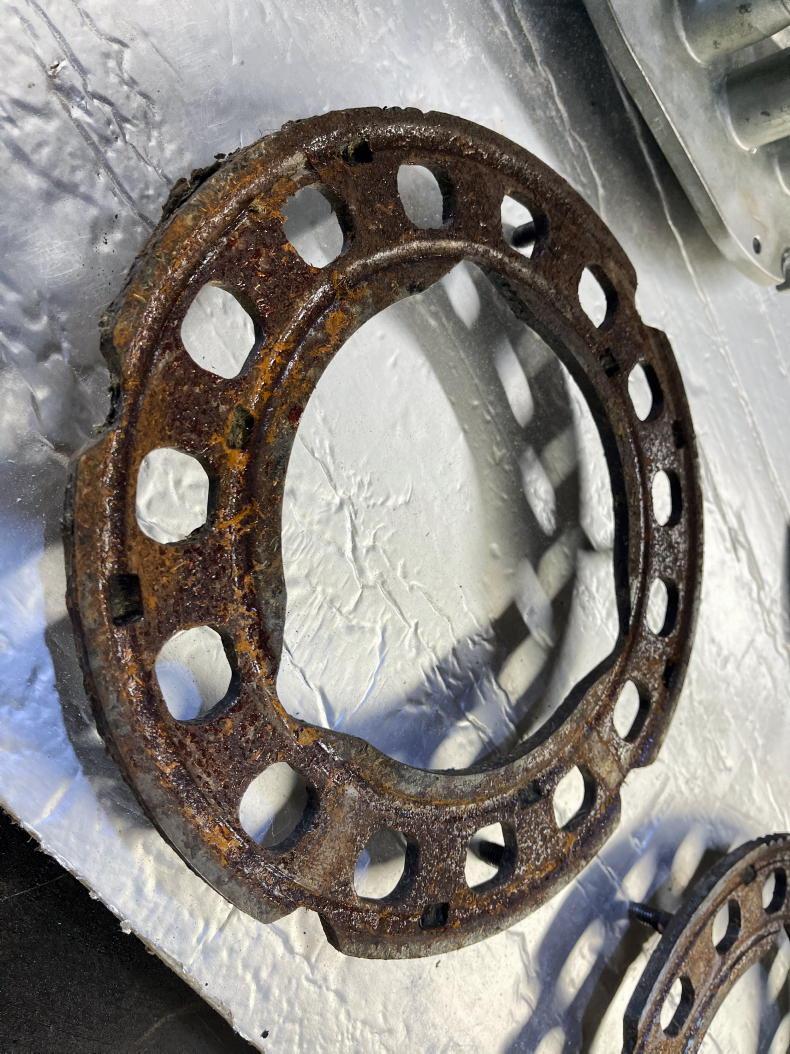
A badly worn cutting screen.

Badly worn cutting screens will have train track like groves either side of where the blade was.
Before checking for wear, rinse the macerator with water to remove any slurry. This cleans the inside, leaving inspection easier. Once that is done, open the inspection hatch(es) and assess condition, looking for blade and cutting screen wear. Blades that need to be replaced will be worn thin (11mm thick new) and possibly have been adjusted to their max (washers flat against blade holder). Cutting screens may have train track-like lines worn into them from blade contact. If these are your symptoms, start by ordering or ensuring you have the correct replacement parts which can vary depending on the number of outlets. Blades and cutting screens are generally replaced together.
Blade replacement
Once inspected, the next step is to remove the end plate (opposite the hydraulic motor). The distribution hoses may make it hard to access the five nuts and hard to separate the plate. In some cases, removing some hoses may be the best option.

Once the rotor is removed check its condition and replace its two blades.
When removed, loosen and remove the bolt holding the rotor on to the hydraulic motor shaft. The rotor should then pull out freely but keep an eye out for shims as they’ll be needed later. Set the rotor down on a bench and pry off the blades on either side. When replacing blades make sure they are fitted in the right orientation and that the blade holder isn’t damaged or worn. The cutting screen on both outer housing plates will need to be removed and the replacements fitted. Ensure screen outlets are lining up with the outlets on the housing.

When the washer has reached the blade holder then the blade is fully worn.
Having inspected the housing condition and established that the motor is in good order with no seal damage, the next step is to reset the eccentric adjusters. Our unit had two eccentric adjusters although units with more outlets have four. Simply remove the two bolts holding in each adjuster, remove them and place individually in a vice (as shown).
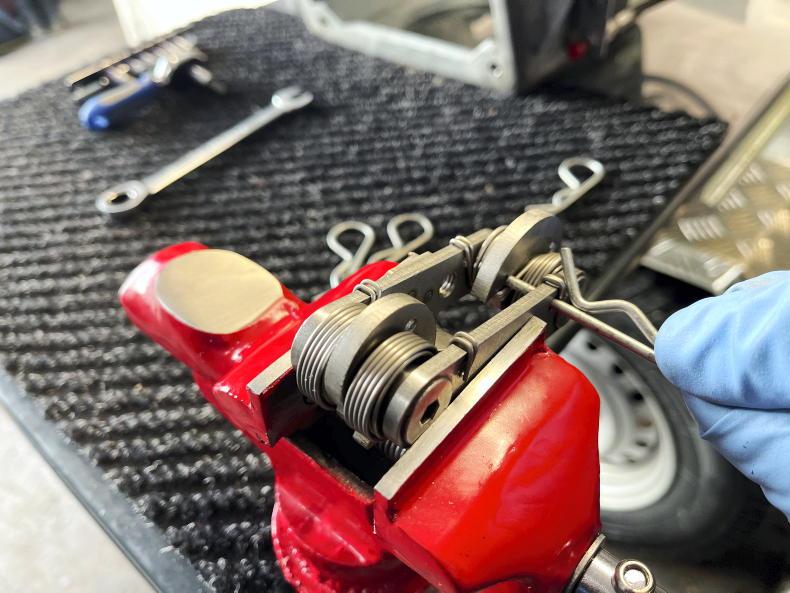
Reset the eccentric adjusters by turning them back using pipe grips and inserting an R-clip (opposite threaded hole) to hold each cam in position.
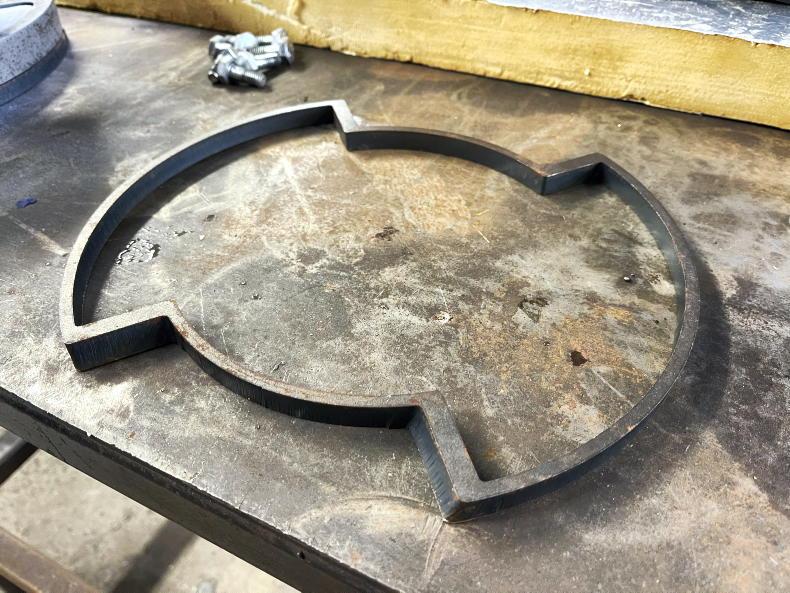
A new blade for a 30 outlet ECL machine.

R-clips are inserted, holding each sprung cam in place and ready for reassembly.
Next, using two R-clips for each adjuster, wind back the spring-loaded cam using pipe grips or similar and insert the clip from the side opposite the threaded hole. Do this for the two adjusters and mount them back on the rotor. These adjusters are key as they adjust blade pressure on the cutting screen, according to wear.

The inner cutting screen can be easily forgotten about.
Now refit the rotor to the motor shaft, making sure shims are present, then tighten its bolt. Fit the outer housing plate back on and tighten each of the five nuts. Through the inspection hatches remove each of the R-clips. This will push the blades back out against the cutting screens. Refit the inspection hatches and mount any hoses that may have been removed. Finish by giving the macerator’s grease nipple a shot of grease.
A macerator should be operated in both directions, for example two tanker loads clockwise and the next two anti-clockwise.

Ensure the stone trap is emptied on a regular basis.
Doing this practically doubles service life as blades have been designed to cut in both directions. Never run a macerator dry as its blades will heat from being in contact and lose their temper. The slurry acts as a lubricant for the blades. Stone traps should be emptied on a regular basis depending on the amount of debris in the slurry. Ensure the hydraulic motor isn’t receiving too much oil flow. Too much will spin the rotor faster than is required. Not only will this potentially harm the motor’s oil seals but could affect chopping and distribution. The ECL macerator is designed to be supplied with 50l/min (1.75bar) equating to 200rpm.
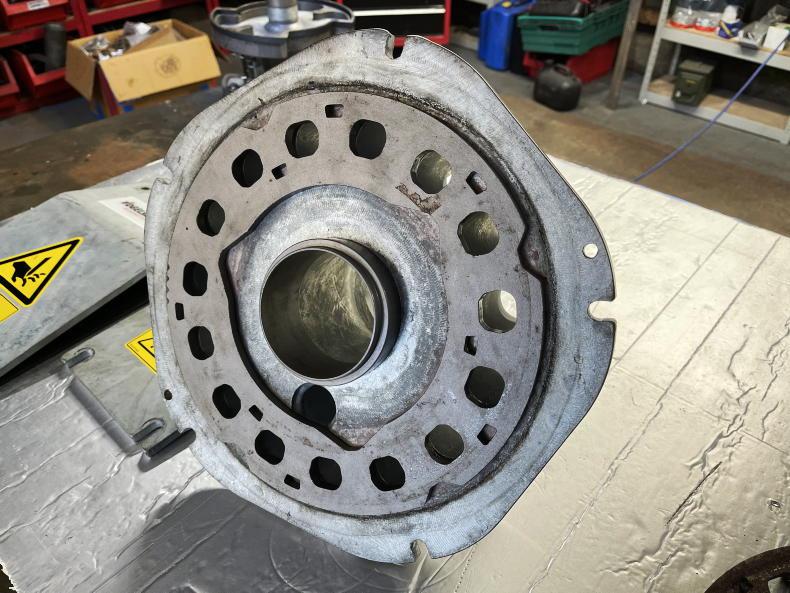
Front housing plate with the new cutting screen bolted on.
Once the macerator is about to be parked up for a length of time it is good practice to rinse it with water, removing any slurry. Best practice before putting the tanker or umbilical system away for the winter, according to Paul, is to split the macerator and reset the eccentric adjusters leaving the R-clips in place until slurry spreading is about to start again. This prevents the blades seizing to the cutting screens and removes force from the adjuster springs. Also, lubricate the whole unit internally with diesel to prevent any corrosion.
Since the introduction of the grant-aided support for the transition to Low Emission Slurry Spreading (LESS) technology through the Targeted Agricultural Modernisation Scheme (TAMS), 2,756 grant applications have been paid out for dribble bars, trailing shoes and injection systems. This includes retrofit units, umbilical units and new tankers supplied with either.

Paul Feeney, Vogelsang Ireland.
Most farmers who have availed of TAMS are moving from a traditional maintenance-free splash plate. All dribble bar and trailing shoe systems require a macerator or distributor to perform properly (here we will use the term macerator). The purpose of these machines is to distribute slurry evenly through each of the outlet hoses as well as chop fibrous material using rotating blades. Macerators need to be correctly maintained and routinely serviced for best performance and a long working life.
Many farmers assume macerators are complicated devices that require specialist servicing. However, this is not the case for most types. It is a task that can be undertaken by anyone with a basic mechanical knowledge or having sought advice from their dealer.

The standard service procedure is relatively simple and requires few tools.
While many Irish manufacturers build their own dribble bar and trailing shoe systems, many with the exception of a few source macerators from German manufacturer Vogelsang. We travelled to meet Paul Feeney of Vogelsang Ireland to get a run-through on the standard service procedure of a Vogelsang ECL macerator.
Symptoms
The service intervals of a macerator depend on the volume of slurry that passes through it.
How well the slurry has been agitated and how the macerator is used are two factors that also affect its lifespan.

The main symptom of a macerator in a state of disrepair is frequent blocking. Often, the eccentric adjusters are at the end of their range which means the blades and cutting screens are worn to the limit.

In some cases it may be easier to remove outlet hoses to allow access to the nuts on the front of the housing.
Airflow is critical if a macerator is to perform to the best of its ability. It is worth checking every so often that the macerator’s air vents are clear and that air movement isn’t restricted. Excessive vibrations among the outlet hoses are symptoms of blocked air vents.
Tear down
The most common Vogelsang macerator fitted to LESS equipment here in Ireland is the ECL. At Agritechnica 2019, Vogelsang launched its new ECQ unit as a more premium option. It offers increased cutting area and a larger inspection hatch through which all service procedures can be carried out without the need for removing an end plate. With only relatively few ECQ units working in the country, we focused on the 30-outlet ECL model.

A badly worn cutting screen.

Badly worn cutting screens will have train track like groves either side of where the blade was.
Before checking for wear, rinse the macerator with water to remove any slurry. This cleans the inside, leaving inspection easier. Once that is done, open the inspection hatch(es) and assess condition, looking for blade and cutting screen wear. Blades that need to be replaced will be worn thin (11mm thick new) and possibly have been adjusted to their max (washers flat against blade holder). Cutting screens may have train track-like lines worn into them from blade contact. If these are your symptoms, start by ordering or ensuring you have the correct replacement parts which can vary depending on the number of outlets. Blades and cutting screens are generally replaced together.
Blade replacement
Once inspected, the next step is to remove the end plate (opposite the hydraulic motor). The distribution hoses may make it hard to access the five nuts and hard to separate the plate. In some cases, removing some hoses may be the best option.

Once the rotor is removed check its condition and replace its two blades.
When removed, loosen and remove the bolt holding the rotor on to the hydraulic motor shaft. The rotor should then pull out freely but keep an eye out for shims as they’ll be needed later. Set the rotor down on a bench and pry off the blades on either side. When replacing blades make sure they are fitted in the right orientation and that the blade holder isn’t damaged or worn. The cutting screen on both outer housing plates will need to be removed and the replacements fitted. Ensure screen outlets are lining up with the outlets on the housing.

When the washer has reached the blade holder then the blade is fully worn.
Having inspected the housing condition and established that the motor is in good order with no seal damage, the next step is to reset the eccentric adjusters. Our unit had two eccentric adjusters although units with more outlets have four. Simply remove the two bolts holding in each adjuster, remove them and place individually in a vice (as shown).

Reset the eccentric adjusters by turning them back using pipe grips and inserting an R-clip (opposite threaded hole) to hold each cam in position.

A new blade for a 30 outlet ECL machine.

R-clips are inserted, holding each sprung cam in place and ready for reassembly.
Next, using two R-clips for each adjuster, wind back the spring-loaded cam using pipe grips or similar and insert the clip from the side opposite the threaded hole. Do this for the two adjusters and mount them back on the rotor. These adjusters are key as they adjust blade pressure on the cutting screen, according to wear.

The inner cutting screen can be easily forgotten about.
Now refit the rotor to the motor shaft, making sure shims are present, then tighten its bolt. Fit the outer housing plate back on and tighten each of the five nuts. Through the inspection hatches remove each of the R-clips. This will push the blades back out against the cutting screens. Refit the inspection hatches and mount any hoses that may have been removed. Finish by giving the macerator’s grease nipple a shot of grease.
A macerator should be operated in both directions, for example two tanker loads clockwise and the next two anti-clockwise.

Ensure the stone trap is emptied on a regular basis.
Doing this practically doubles service life as blades have been designed to cut in both directions. Never run a macerator dry as its blades will heat from being in contact and lose their temper. The slurry acts as a lubricant for the blades. Stone traps should be emptied on a regular basis depending on the amount of debris in the slurry. Ensure the hydraulic motor isn’t receiving too much oil flow. Too much will spin the rotor faster than is required. Not only will this potentially harm the motor’s oil seals but could affect chopping and distribution. The ECL macerator is designed to be supplied with 50l/min (1.75bar) equating to 200rpm.

Front housing plate with the new cutting screen bolted on.
Once the macerator is about to be parked up for a length of time it is good practice to rinse it with water, removing any slurry. Best practice before putting the tanker or umbilical system away for the winter, according to Paul, is to split the macerator and reset the eccentric adjusters leaving the R-clips in place until slurry spreading is about to start again. This prevents the blades seizing to the cutting screens and removes force from the adjuster springs. Also, lubricate the whole unit internally with diesel to prevent any corrosion.


















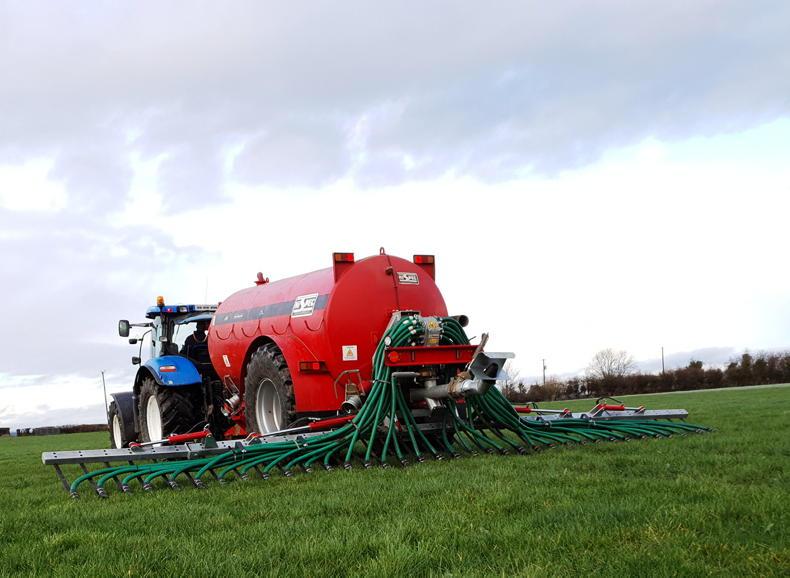


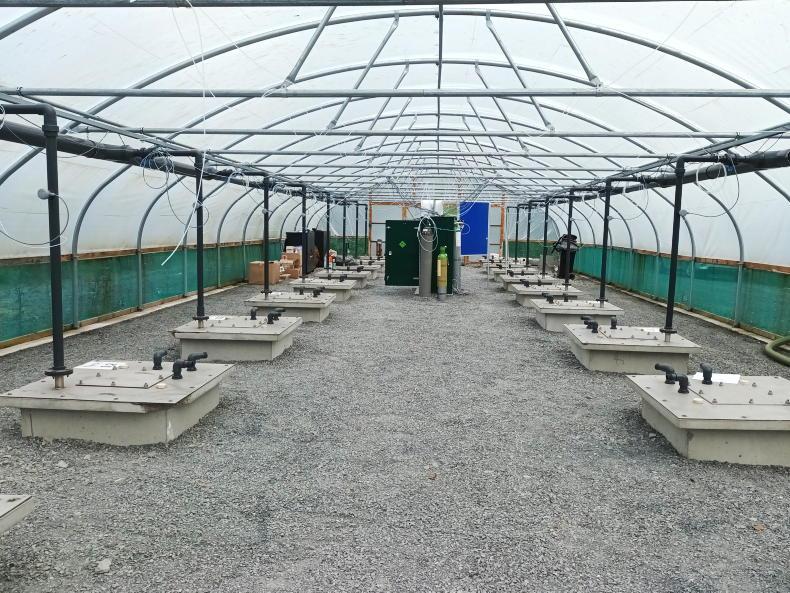

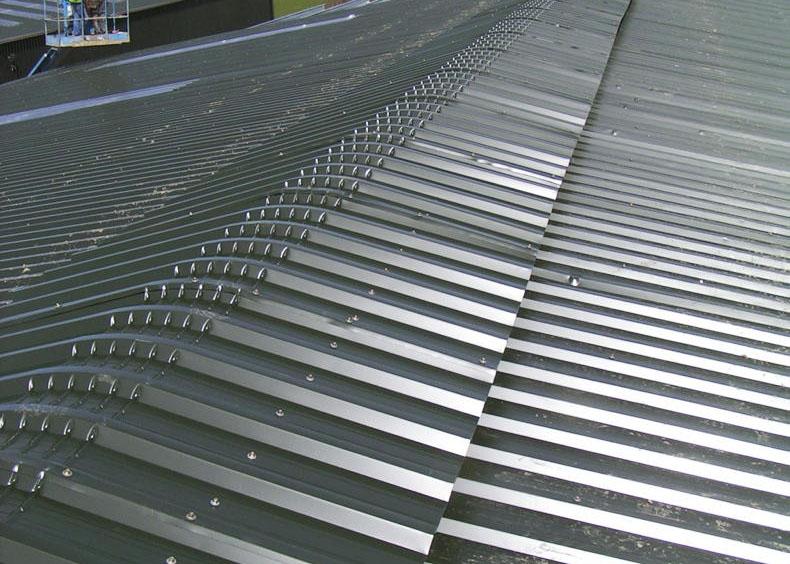
SHARING OPTIONS